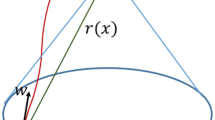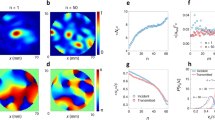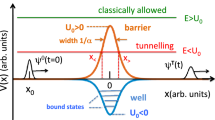Abstract
THE determination of the velocity of light has attracted the attention of many scientific workers and, in spite of the experimental difficulties involved, its value is now known with a probable error of about 5 parts in 105. The velocity of electromagnetic waves, represented in Maxwell's theory by the quantity where is the permeability and k the permittivity of the medium, is generally assumed to have the same value as that of light; and although the electrical measurements made so far are less accurate than those of the velocity of light, they have served to establish the equality of the two constants within the limits of experimental error. Other electrical methods have become practicable as a result of the techniques employing centimetric waves developed during the last few years. The one dealt with in this note depends on the electrical resonance of a short length of a wave-guide closed at both ends. The frequency of resonance of a cylindrical guide of diameter D and length L is in which v represents r is a constant for a particular mode of resonance and n is the number of half wave-lengths in the guide.
This is a preview of subscription content, access via your institution
Access options
Subscribe to this journal
Receive 51 print issues and online access
$199.00 per year
only $3.90 per issue
Buy this article
- Purchase on Springer Link
- Instant access to full article PDF
Prices may be subject to local taxes which are calculated during checkout
Similar content being viewed by others
Author information
Authors and Affiliations
Rights and permissions
About this article
Cite this article
ESSEN, L. Velocity of Electromagnetic Waves. Nature 159, 611–612 (1947). https://doi.org/10.1038/159611a0
Issue Date:
DOI: https://doi.org/10.1038/159611a0
This article is cited by
-
Designing an original instrument for measuring the speed of light
Journal of Optics (2013)
-
Louis Essen and the Velocity of Light: From Wartime Radar to Unit of Length
Physics in Perspective (2010)
-
Velocity of Light and of Radio Waves
Nature (1950)
-
Atomic Definition of Primary Standards
Nature (1950)
-
Velocity of Electromagnetic Waves
Nature (1949)
Comments
By submitting a comment you agree to abide by our Terms and Community Guidelines. If you find something abusive or that does not comply with our terms or guidelines please flag it as inappropriate.



